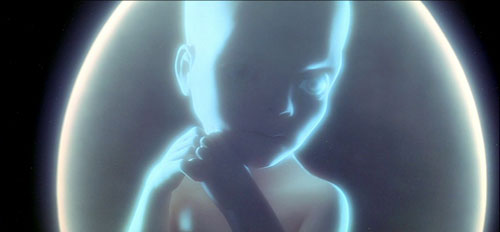


It was preceded by 2010: Odyssey Two and succeeded by 3001: The Final Odyssey. His consciousness was drawn into the TMA-2 monolith. Clarkes third novel in a four part Space Odyssey series. It is the pattern of a great deal of mythology, and that is what we were trying to suggest. This original 1972 re-release US One Sheet for Stanley Kubricks sci-fi epic 2001: A Space Odyssey has the same image as the original 1968 Star Child. The Starchild, as shown on screen, is a cinematic representation of the consciousness of Dave Bowman. We have to only guess what happens when he goes back. With Keir Dullea, Gary Lockwood, William Sylvester, Daniel Richter. Just as we’re not quite sure what do in zoos with animals to try to give them what we think is their natural environment.Īnyway, when they get finished with him, as happens in so many myths of all cultures in the world, he is transformed into some kind of super being and sent back to Earth, transformed and made into some sort of superman. 2001: A Space Odyssey: Directed by Stanley Kubrick. They choose this room, which is a very inaccurate replica of French architecture (deliberately so, inaccurate) because one was suggesting that they had some idea of something that he might think was pretty, but wasn’t quite sure.

It just seems to happen as it does in the film. They put him in what I suppose you could describe as a human zoo to study him, and his whole life passes from that point on in that room. The idea was supposed to be that he is taken in by god-like entities, creatures of pure energy and intelligence with no shape or form. When you just say the ideas they sound foolish, whereas if they’re dramatized one feels it, but I'll try. I’ve tried to avoid doing this ever since the picture came out. Adam Savages Starchild from 2001: A Space Odyssey Adam Savage’s Tested. Take a journey through the history of science fiction and examine some of the cultural influences behind Stanley Kubrick’s 1968 visionary film ‘2001: A Space Odyssey,’ including the Vietnam. ScreenCrush and Cinephilia & Beyond came across a YouTube channel with footage from footage is from filmmaker Jun’ichi Yaoi, and in the documentary Yaoi was making, he interviewed Kubrick on the phone (supposedly) and gave his thoughts on the ending of 2001: A video has surfaced which appears to feature Stanley Kubrick himself explaining the end of 1968s 2001: A Space Odyssey. So just because Stanley Kubrick is possibly on record giving his thoughts on the ending of 2001: A Space Odyssey, it doesn’t mean the film has been definitively answered and concluded.


 0 kommentar(er)
0 kommentar(er)
